Finland
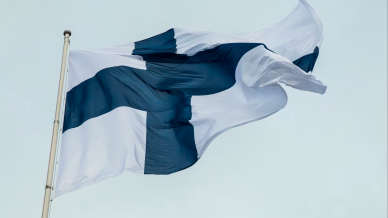
Finland is about pure and healthy tap water of the highest quality and coffee as the number one drink at every home consumed all day long. It is also about hares and even deers that people may come across while walking in the city. And it is about a special permit when one wants to go fishing.
A country of thousand lakes, or blue Suomi, is a place where comfort and quality of life have reached an absolute level. People here live in an unhurried manner at their leisure.
After the noise of African, Arab, and Turkish resorts, Finland seems so quiet and immersed in itself as if someone has turned down the sound and made everything look like slow motion. Everyone who comes here for the first time gets this rather deceptive impression. After some time, this small Scandinavian country will get revealed from unexpected perspectives. It will also touch your soul with benevolence and hospitability.

General Information
A trip to Finland is an excellent option for those who are not in favour of noisy, overcrowded, and hot resorts of Egypt, Turkey, or Morocco. People come here to relax and enjoy the beauty of harsh Scandinavian nature, go fishing and hunting to the top of their hearts, take a cure at mineral springs, or walk through the clean and narrow streets of Finnish cities.
Even the fans of guided tours will be able to find something for their taste. The glorious history of Suomi has found its reflection in many architectural monuments treasured by the Finns.
Historical Background
Finland has not always been an independent country. It used to be a part of Sweden for centuries, and between the beginning of the 19th century and 1917, it belonged to the Russian Empire as the Grand Duchy of Finland.
The Swedish period has left Finland with Swedish as one of the two official languages spoken on equal terms with Finnish.
Its development began during the reign of Alexander II of Russia. In a hundred years of Swedish dominance, it eventually gained an official status. National culture development also got its boost. However, the Finns were obliged to speak Russian too. And that violent Russification pushed the people keen on liberty to search for ways of gaining independence.
And then there was fateful 1917 when the entire Russian Empire collapsed. The former Grand Duchy of Finland gained its independence and began building its own country.
Soviet Russia was not willing to support the newly-formed state. So in 1918 and 1921, it tried to bring the rebellious Finns back to its territory through two partially successful military campaigns — the First and Second Soviet-Finnish Wars. During the first one, the Soviets lost a part of the Arctic, the islands in the Barents Sea, and access to international waters.
In Finland itself, 1918 was a very tragic year. The country got plunged into the 108-day civil war, after which 35,000 people died.
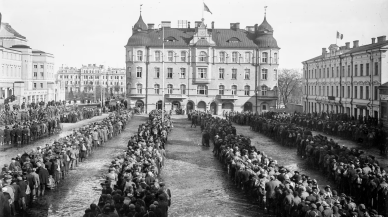
The Red Guard take Tampere, Finnish Civil War begins
Three years later, Finland attempted to recover Karelia from the Russian SFSR. However, the attack failed, the Finnish military forces suffered a crushing defeat, and Karelia remained a part of Russia. Afterward, the Finnish north came under the control of Finland and has remained one of its provinces up to date.
The Winter War of 1939-1940 brought a chain of victories for the USSR. Finland had to cede several territories, which it tried to get back later unsuccessfully during WWII fighting on the side of Germany.
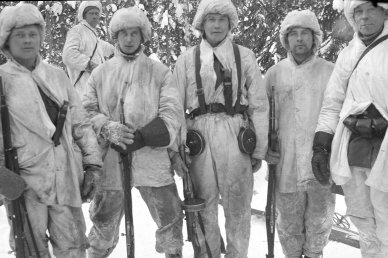
Finnish ski patrol after the battle, February 1, 1940
In 1944, Finland seceded from the alliance with Germany and began taking part in military operations against the Nazis.
Though Finland opted for a pro-Western and capitalistic way of development after the war, it remained under the political and economic influence of the USSR.
When the USSR collapsed in 1991, the country eventually got liberated from external influence. It had an immediate effect on its economy. Three years in a row, between 1991 and 1994, Finland suffered from the gravest crisis. At that time, every third Finn became unemployed.
In the mid-1990s, the situation gradually improved. And in the 2000s, Finland received all possible trophies of international recognition. In 2003, 2004, and 2010, this Scandinavian country was ranked first in a range of the world’s ratings related to the quality of life, safety, and happiness. Even nowadays, Finland has retained its position among the top three best places for life on the Earth.
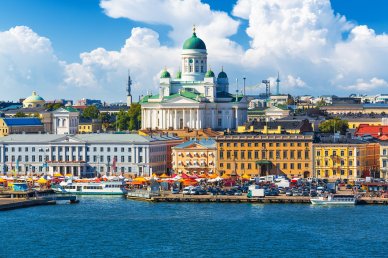
A view of the waterfront of the Finnish capital, Helsinki. A strong social protection system in the country is only one of the reasons for the high quality of life of its citizens
Geography and Climate
Although Finland is considered a Scandinavian country, it occupies only a tiny part of the peninsula. However, 25% of its territory is located above the Arctic Circle.
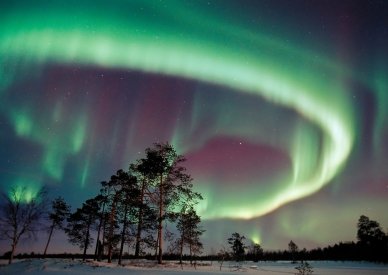
Northern Lights in Finland
Finland borders Sweden, Norway, Russian Federation, and Estonia. The Finnish-Norwegian and Finnish-Russian boundaries are terrestrial, and the Finnish-Estonian is the marine one, stretching across the Gulf of Finland. The border with Sweden is half-terrestrial and half-marine (along the Gulf of Bothnia).
There live more than 5,5 million people in Finland. There is no city with a million-plus population, but the biggest ones are Helsinki (657,000), Espoo (256,000), and Tampere (250,000).
Finland is not a scorchingly hot country with an extremely warm sea. And it cannot be regarded as an excellent option for beach recreation. However, it happens that sometimes the air temperature reaches +30°C.
Finnish summer is not a typical one. There are not many sunny and warm days, and it rains very often. The average temperatures vary by region (+17°C - 25°C). August is the rainiest month, so it is not a good idea to spend the peak of the vacation season in Finland.
Finnish winter is a completely different matter. It is the time when skiing and snowboarding fans may delight in the infinity of pistes. Much snow and constantly frosty weather at 75 mountain ski resorts attract thousands of tourists to Finland every year.
Thick snow usually covers the fells in the northern part of the country 200 days a year. And the holiday season in Pyhä, Saariselkä, Vuokatti, Levi, and other places lasts from October to May.
Languages and Currency
As mentioned before, Finnish and Swedish are the two official languages in Finland. Besides, there are also the recognised regional languages, for example, Sámi.
The euro has been the official currency since 2002.
Directions
Getting to Finland is possible in different ways. As a rule, it depends on the continent you are travelling from. So tourists can opt for a plane, a bus, a train, or even a car. However, the latter is most suitable only for keen drivers.
Undoubtedly, air travel is the most time-saving and comfortable option for those willing to visit Suomi. The largest airline in Finland is Finnair, based in Helsinki Airport. The other airlines that service flights to and from Finland are AirBaltic, AirCanada, American Airlines, Etihad, EasyJet, Singapore Airlines, Lufthansa, and many others.
The prices for tickets are the highest during a holiday season (from (May to September) or when thousands of people hurry to Lapland (or Sápmi) to see Santa Claus on Christmas.
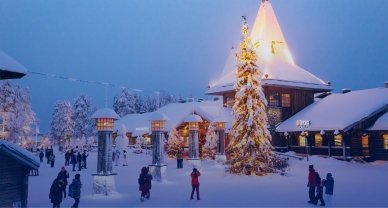
Santa Claus Village, Arctic Circle, Rovaniemi, Lapland
A bus tour will be much cheaper but more time-consuming. Even the most modern buses cannot guarantee the highest comfort level for tourists during more than 30 hours of constant sitting.
In Europe, many high-speed trains are available for travellers to get to Helsinki.
The current visa requirements and other entry rules that have been adopted due to the ongoing pandemic should be checked via the website of the Ministry of Foreign Affairs of Finland.

Accommodation
Finland is not only a prosperous country but also very expensive. A trip there will cost a lot of money, so a holiday is not going to be money-saving.
While other countries use the five-star hotel rating, this system does not operate in Finland. All the stars in the Finnish hotel descriptions are not actually given by the authorised organisations but by travel agencies based on guests’ feedback.
Nonetheless, there is the overall impression that Finland is a clean, cozy, and pricey country to live in. The range of prices for hotel rooms with separate bathrooms and other amenities begins with €60 per night. Cheaper can be only hostels (€20 and higher), and despite being noisy and crowded, the conditions offered are quite good.
Besides ordinary city hotels, tourists may be accommodated in SPA hotels that also offer some wellness treatments. Most of them can be found by the lakes or in the woods.
Those who have decided to go fishing, hunting, or try any other type of outdoor activities should find a cottage not far from a river or a lake. There are all necessary conditions for fishing fans, hunters, and their families, like cosy living rooms, bedrooms, children’s rooms, equipped kitchens, and saunas, without which a typical Finnish house would be unthinkable.
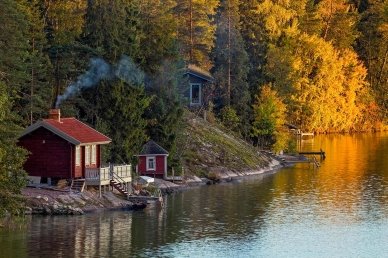
Summer Cottage in Finland
Below are several options of budget-friendly accommodation for a couple of days and weeks:
- Pyhän Asteli Resort is a four-star hotel in Pyhätunturi that offers a set of standard services, like a separate bathroom and central heating, free breakfast, Wi-Fi, and a car park.
- CheapSleep Hostel Helsinki is a two-star hostel in the Finnish capital. The rooms are clean, plainly, and comfortably equipped. The hostel offers free breakfast, high-speed Internet access, and Wi-Fi.
- Saimaa Lakeland Fishermans Village is a resort hotel in Savonlinna located by the lake. It is an excellent place for those keen on fishing and hunting, with a full set of amenities in the rooms, including the fishing equipment and boats.
- Hostelli Naurava Kulkuri is a perfect hostel with sauna in Hämeenlinna. There are comfortable king’s-sized beds, fresh bed linen, a kitchen, a living room, clean showers and toilets, friendly staff, high-speed Internet access, and Wi-Fi.
- Eerikkilä Sport & Outdoor Resort is a resort hotel in the southern part of Finland called Tammela. It is a perfect place for tourists who prefer outdoor activities. Apart from comfortable rooms, there is a gym and bicycles, high-speed Internet access, and Wi-Fi.
The other option of accommodation available in Finland is to rent a house or an apartment. However, it is very expensive and, as a rule, suitable only for those who are going to work in Finland or have some other long-term plans. It is better to live in a hotel if your stay is short-term. Finnish hotels are not worse than private apartments in terms of the quality of service.
Places to See
Wild nature with its harsh and primeval beauty is the main attraction of Finland. There are only a few places in the world where nature is treated as gently as in this Scandinavian country.
Fishing at Saimaa
Though Finland is often called the country of thousand lakes, in reality, this figure does not reflect the actual number of small and large water bodies located in its territory.
At a rough estimate, there are 188,000 lakes in Suomi. The largest one is Saimaa in the southwest of the country.
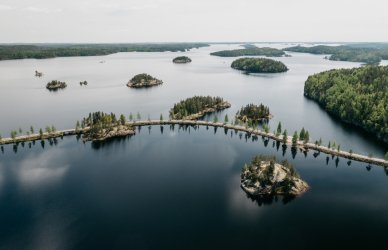
Saimaa - the largest lake in Finland
Its shoreline is 15,000 long. Saimaa’s aquatic area comprises a lot of smaller lakes, gulfs, channels, and swamps. If to drive from the small town of Imatra, which is situated on the southern lakeshore, to Joensuu on the north, it will take more than three hours.
There are around 13,000 small and large islands within the lake, the surface of which is like a mirror.
Fishing at Saimaa is the best thing that may happen in the life of a keen fishing enthusiast. There is so much fish, the tastiest and most exquisite species like trout, lake salmon, corogenus, and pike. Though fishing is allowed all year round, a period for each type of fish has been specified. For example, the largest and most delicious trout can be caught in June, and sometimes it is even possible to come across a gigantic fish.
Of course, one cannot come here with a fishing rod and start fishing. In Finland, a license is needed, and after that, a properly organised process will guarantee a real fishing thrill.
A couple of Finnish centres in Lappeenranta and Imatra deal with fishing arrangements at Saimaa. The license itself is expensive; the price ranges from €300 to €600. The permit may be issued both for one person and a group of people, but in that case, they will split the bill.
The license price also includes the insurance that covers accidents, boat and gear usage. A knowledgeable guide may also be provided at the request of the group.
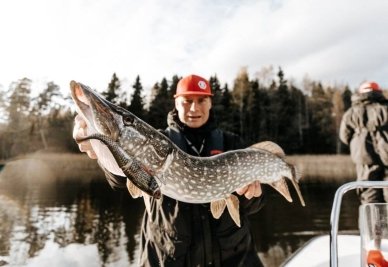
Fishing at Saimaa
Mountain Ski Resorts
In Finland, skiing is a national kind of sport and an entire industry of active leisure. The Finnish mountain ski resorts offer as quality pistes and infrastructure as those in Austria and Switzerland.
There is a considerable number of resorts in this small Scandinavian country — 75. Interestingly, Finland is not a mountainous country. And the pistes pass through the Lapland’s fells and outskirts of big cities.
The most known of them are located in Pyhätunturi (a resort town, several kilometres from the homeland of Santa Claus — Rovaniemi) and Saariselkä (the locality above the Arctic Circle, a three-hour flight from Helsinki). Each resort offers 12-15 pistes of various complexity for children and adults, equipment rentals, and convenient infrastructure (hotels, restaurants, cafes, and first-aid stations).
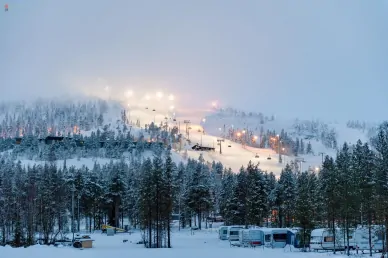
Pyhätunturi ski resort
About 170 km to the north from Rovaniemi, you will end up in Levi, Finland’s biggest ski resort. The fans of cross-country skiing should expect 230 km of excellent pistes, and those in love with snowboarding will appreciate local snowparks. Even the most desperate mountain skiers will have something to do. There is a vast number of chairlifts and pistes, black slopes, or bunny hills.
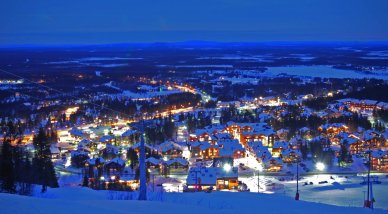
Levi ski resort, Finland
Guided Tours
Finland has prepared a special offer for those indifferent to fishing, skiing, and any other physical activity.
There is a myriad of guided tours of the country’s cities. Without a doubt, one should start with Helsinki. The Finnish capital resembles Saint Petersburg a lot due to numerous museums, Orthodox and Lutheran churches, monuments of emperors and empresses, and even the Senate Square. It is a known fact that the Russian Empire has affected the life of entire Finland.
The city is located within 300 islands, each of which is a fabulous sightseeing attraction. For example, in Seurasaari, there is an open-air ethnographic museum with huts, barns, and other rural constructions, quite typical for a Finnish village. Many of them were brought to the island in their original form from the other regions.
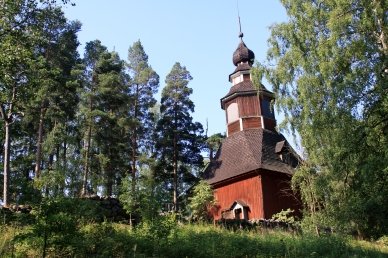
Seurasaari Open-Air Museum
To get to the islands, where Suomenlinna Fortress was built during Swedish dominance, tourists may take a ferry from the Market Square right in the centre of Helsinki. Once, this sea fortress used to be a special fortification to protect the capital from sea attacks, but now it is a grand museum complex.
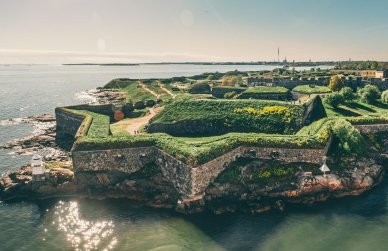
Suomenlinna Fortress, Finland
Helsinki is a city of museums. Here are hundreds of them, and each has been dedicated to a specific theme. The most enchanting displays can be observed at the National Museum of Finland and Ateneum. The latter is the art gallery exhibiting canvas of the Finnish painters and great artists of France, Russia, and Spain.
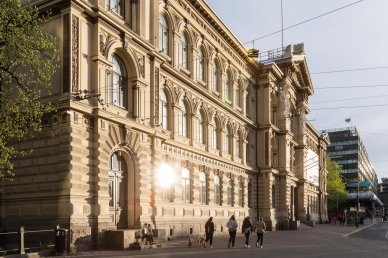
Ateneum museum, Helsinki, Finland
Serena Waterpark, Linnanmäki amusement park, and Korkeasaari Zoo are excellent options for travellers with children. Those keen on city strolls will be excited by walking around the Finnish Champs-Élysées — Botanical Garden and Espalanade Park.
Besides Helsinki, the other must-see locality is Turku, the first capital of Finland. There, you will be fascinated exploring the magnificent monument of medieval architecture — Turku Cathedral, which is the magnificent monument of medieval architecture, Abo Castle (a former fortress and luxurious palace and an art museum at present), Vanha Suutori (old square near the cathedral), and many other places of interest.
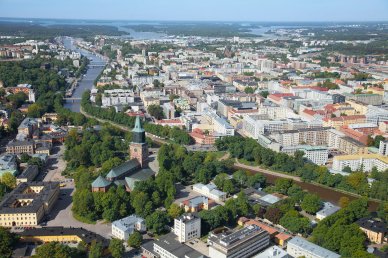
Turku, Finland
Visitors to the country also fancy the guided tours of the other cities like Kotka, Imatra, or Lappeenranta.
Food
Finnish cuisine is like the soul of these people. They eat filling food: a lot of meat and fish, many vegetables and all possible porridges.
However, this food also has a peculiar zest. The Finns cook dishes combining mismatching ingredients, for example, the rye pie kalakukko made of fish baked inside a loaf of bread, or milk-based fish soup kalakeitto.
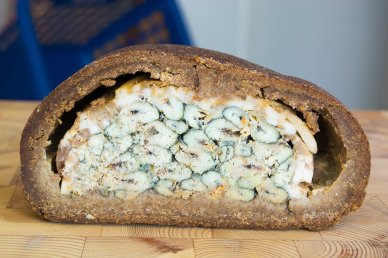
Traditional salted Kalakukko pie from Northern Savonia, Finland
Soaked berries (cowberry and cranberry) are a typical garnish served with meat (pork, mutton, beef) that adds much piquancy and a slightly sour taste.
The Finns have a peculiar passion for baked puddings, so every family has their own age-old special recipes. They put meat, fish, by-products, cabbage, turnip, noodles, or eggs into a pot or a baking pan.
Interestingly, being easy-to-cook, baked pudding is not an everyday food in Finland. As a rule, it is cooked on holidays. For instance, a turnip pudding is an indispensable part of a family dinner on Christmas.
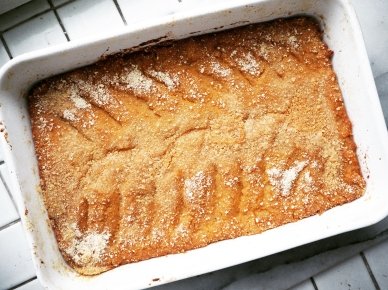
Finnish rutabaga casserole "Lantulaatikko"
Finnish desserts are also very distinctive. Mämmi, or a sweet baked Easter spread, served cooled with vanilla cream, jam, whipped cream, or milk, stands very special.
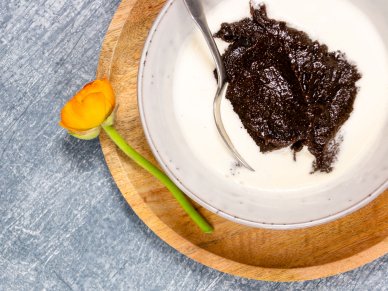
Finnish Mämmi
More traditional desserts are whipped cream with berries, fruit jellies, and berry tarts.
The most common drink of the Finns is coffee. They consume it not less than seven or eight times a day. However, it is not as strong as the one in Germany, Switzerland, and Austria, so consider this while making an order in restaurants or cafes.
Milk has taken the second position, being drunk in the morning and evening, and added to porridges and coffee.
The Finns are regarded as great admirers of hard spirits and beer. They have perjantaipullo, or a Friday bottle, as a favoured way to have rest after a working week. However, such a party should definitely end at least in the late evening on Saturday to have enough time to recover from a hangover on Sunday.
A barley vodka diluted with spring water called Koskenkorva is the national drink of Finland, usually bought on Friday evening to relax at home.
The most original beverage is liquorice aperitif called Salmiakki. It is a bit weird black liquid with a strong anise taste. Normally, the Finns like to drink it before a filling dinner or supper.
Finland allures and tempts with its harsh beauty, unhurried and thorough way of life. This country does not reveal itself to everyone at once. But when it does, it conquers people’s hearts forever.
FAQ
What is Finland's official name?
The official name of Finland is the Republic of Finland.
What is Finland's area?
Finland's total area is approximately 338,455 square kilometers.
Who does Finland have a border with?
Finland shares borders with Sweden to the west, Norway to the north, and Russia to the east.
What is the capital of Finland?
The capital of Finland is Helsinki.
What is the population of Finland?
The population of Finland is about 5.5 million people.
What language is mostly spoken in Finland?
The primary languages spoken in Finland are Finnish and Swedish, with Finnish being the most widely spoken.
What is the traditional religion of Finland?
The traditional and predominant religion in Finland is Lutheranism, specifically the Evangelical Lutheran Church of Finland.
What type of government is Finland under?
Finland is a parliamentary republic with a president as the head of state and a prime minister as the head of government.
Does Finland use the euro?
Yes, Finland uses the Euro (EUR) as its currency.
Is Finland a member of the EU?
Yes, Finland is a member of the European Union.
Is Finland a NATO member?
Finland has been a member of the North Atlantic Treaty Organisation (NATO) since 4 April 2023.
Does Finland have a good economy?
Finland has a high-income advanced economy known for its high standard of living, education system, and strong social welfare structure.
Is Finland an expensive country?
Finland is considered relatively expensive compared to some other countries, particularly in terms of cost of living, dining, and accommodation.
What is Finland famous for?
Finland is famous for its beautiful nature, thousands of lakes, the Northern Lights, sauna culture, high quality of life, and education system. It's also known as the home of Santa Claus in Lapland.
What is Finland's weather like year-round?
Finland experiences a cold, snowy winter and a mild summer. The climate varies from the coastal regions to the inland areas, with Lapland experiencing more extreme cold and longer winters.
What is the requirement to travel to Finland?
Travel requirements for Finland depend on the traveler's nationality. EU citizens can enter freely, while others may need a Schengen visa. Entry requirements can also vary based on current global health and security situations.
Is Finland one of the safest countries?
Yes, Finland is consistently ranked as one of the safest countries in the world, with low crime rates and a stable society.







